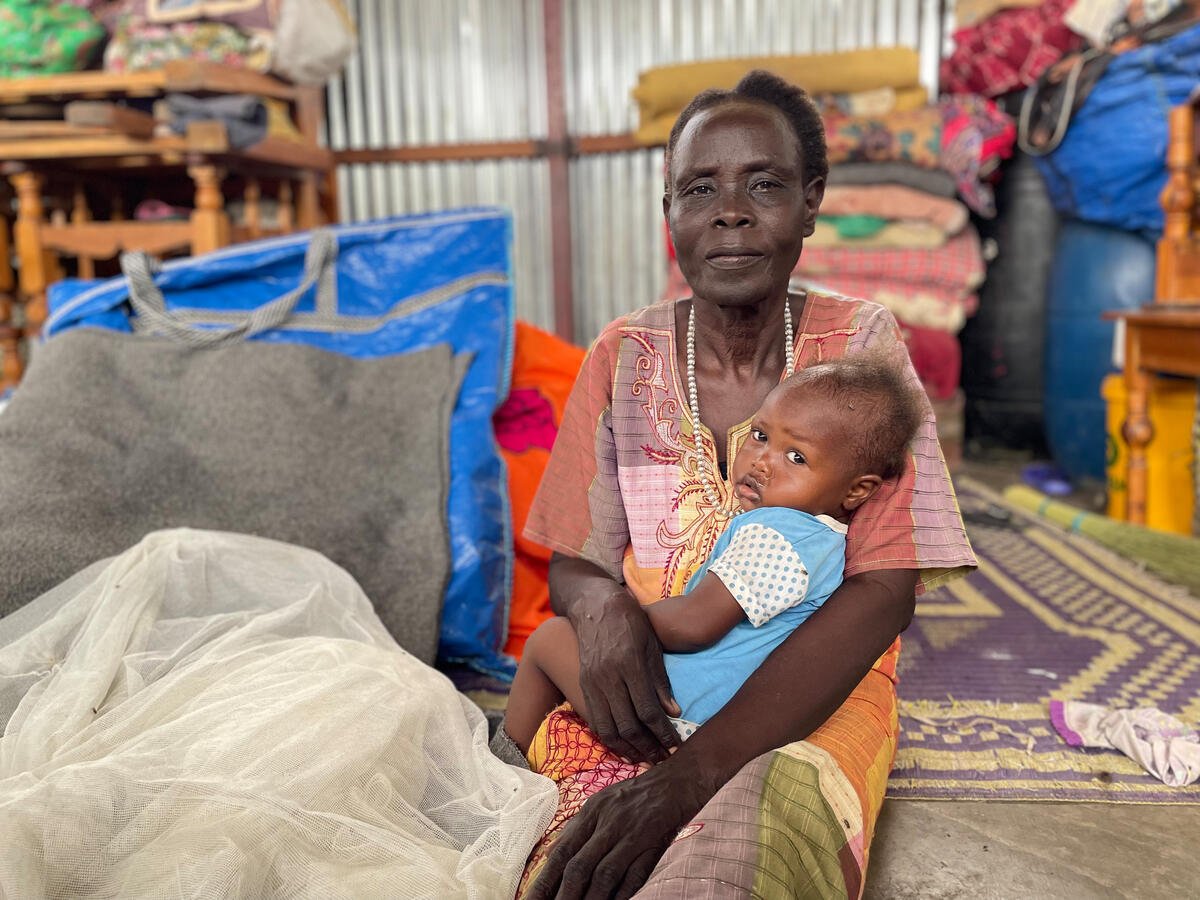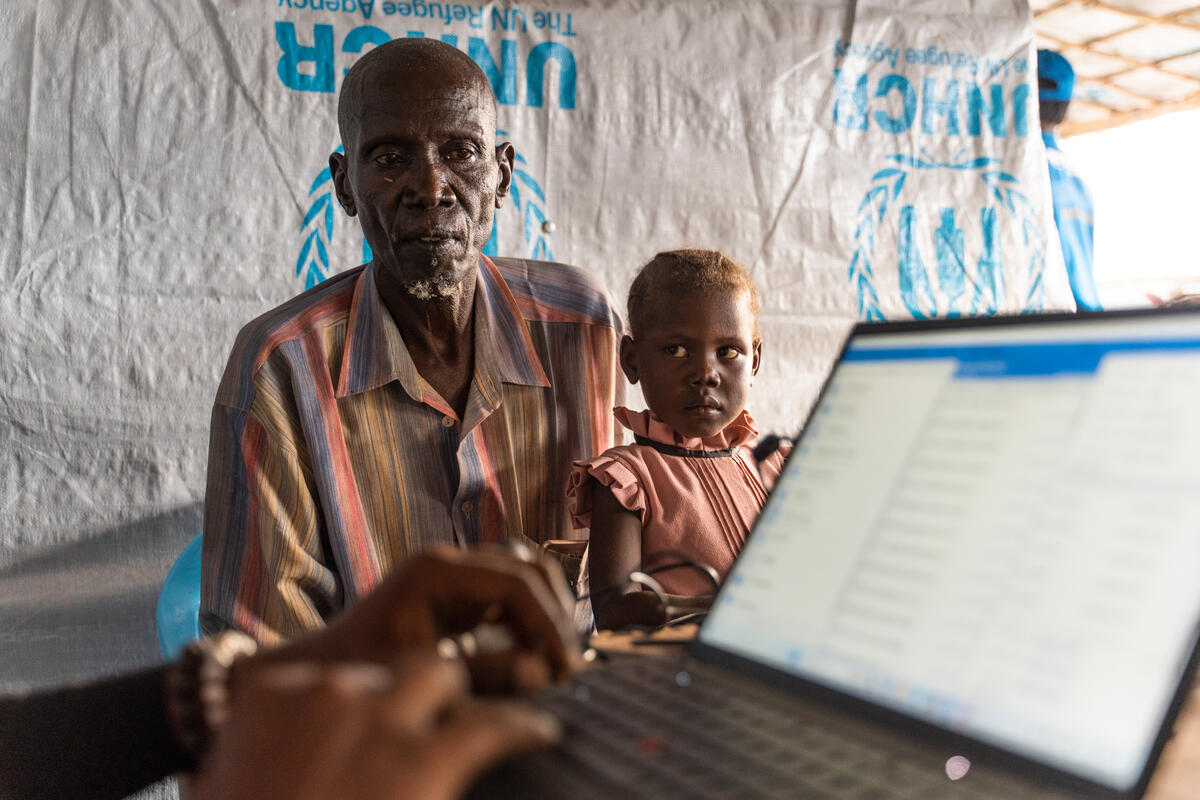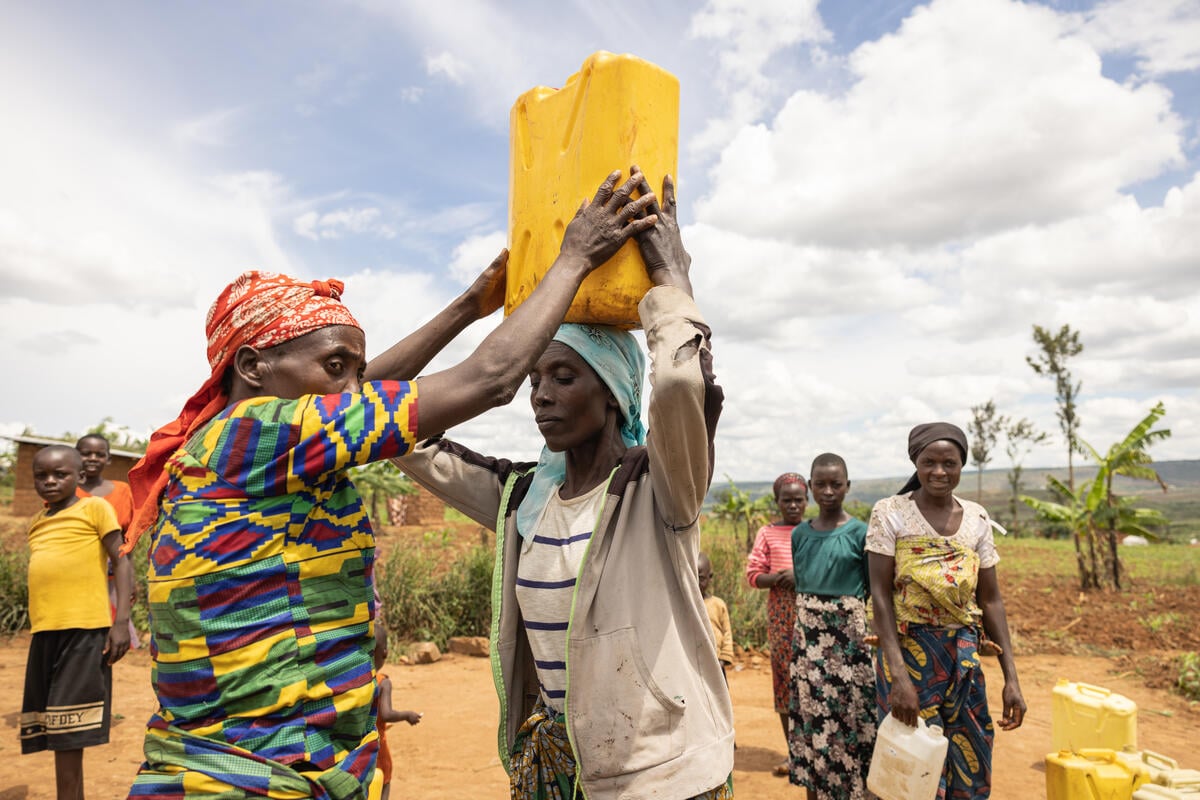Continued instability likely to force more South Sudanese to seek safety elsewhere
Continued instability likely to force more South Sudanese to seek safety elsewhere

NAIROBI, Kenya -- UNHCR, the UN Refugee Agency and the humanitarian agencies is warning that without an imminent resolution in sight for the crises in South Sudan, more South Sudanese are likely to become refugees in 2018.
More than two million South Sudanese have fled the country so far, seeking safety in Uganda, Ethiopia, Sudan, Kenya, the Democratic Republic of Congo and the Central African Republic. Around half a million South Sudanese could become refugees in the coming year, based on the current arrival trends in the neighbouring countries. An additional two million remain displaced inside the country.
Majority of refugees are women and children and the new projected influx would swell the ranks of the two million South Sudanese already in exile in the region - bringing the total number of refugees closer the three million mark. If these projections are proved correct, this would be an exodus not witnessed in Africa since the days of the Rwandan genocide.
High level officials from UNHCR, UN OCHA and other UN humanitarian partners briefed diplomats, development and political experts in Nairobi on 17 October on the South Sudan’s crises and its devastating humanitarian impact. The briefing also highlighted lack of resources as a South Sudan Regional Refugee Response Plan of USD 1.4 billion to support some 2.1 million refugees by this year’s end is merely 25 per cent funded - as of September 2017.
There are only three other similar regional refugee appeals in place worldwide for Burundian, Nigerian and Syrian refugees respectively. Globally, only the size and needs of Syrian refugee population are comparable in magnitude to those of South Sudanese.
“With over four million people displaced since 2013, the impact of the ongoing conflict on civilians is nothing short of a catastrophe,” said Arnauld Akodjenou, UNHCR Regional Refugee Coordinator and Special Advisor for the South Sudan situation. The flight of civilians is like a haemorrhage, draining the country of its most precious resource.” He warned that the continued exposure of children and youth lost to a culture of violence does not augur well for long term stability of the country and the region.
“We must find a way to comprehensively address the root causes of the conflict,” Akodjenou said. “The already complex and protracted political crisis has been compounded by new threats, including the proliferation of arms and the emergence of multiple localized fighting factions.” He added that the Peace Agreement remains the only tool available for the protagonists and the international community to bring an end to the conflict in South Sudan.
The humanitarian agencies in attendance echoed concerns that situation could further deteriorate. The reality that the conflict was in motion, with shifting lines spread across the country was recognized as an additional factor making the crisis more complex. The situation in South Sudan was characterized as a quintessentially protection crisis, with 7.6 million people in need of humanitarian assistance. The population was said to be exposed to grave acts of violence including sexual violence, razing of homes and child recruitment, while hunger and malnutrition are at historic levels, she said. Displaced persons were assessed as being extremely vulnerable and their capacity to deal with shocks is exhausted. The fact that many South Sudanese were displaced up to seven times, and are exposed to growing food insecurity, high malnutrition rates and the ongoing deadly protracted cholera outbreak was also conveyed.
UNHCR’s Africa Bureau Director, Valentin Tapsoba expressed alarm at humanitarian fall out of the crisis which he said was rapidly reaching breaking point “Despite the generosity of host countries, which continue to keep their borders open, the pressure on land and resources of host communities is overwhelming,” he said. “Partners are struggling to provide water, shelter and other basic services.”
Tapsoba cited food shortages created by lack of funding. He said that the 25% funding received against the 1.4 billion inter-agency appeal, while generous, represents a “drop in the ocean”. He noted that the South Sudan crisis is competing for resources with emerging crises affecting Rohingya refugees in Bangladesh, and hurricanes in Latin America.
Other humanitarian agencies warned that the situation of children and youth required special attention, particularly the risk that the latter remained vulnerable to recruitment by fighting factions.
Humanitarian actors operating in South Sudan and all six asylum countries reported increasing challenges as a direct consequence of underfunding in the face of an unrelenting forced displacement trend. This notably operationally translates into elevated malnutrition rates including among refugee women and children; heightened protection risks posed to the physical safety of the displaced and limited access to water, food, health and shelter in hosting areas. UN humanitarian partners also highlighted the need to implement programmes that promote social cohesion in refugee-affected areas, where host communities are bearing a disproportionate load with stretched basic services and heightened environmental degradation.
In the coming weeks, UN and humanitarian partners will evaluate financial requirements for refugee protection and assistance programmes in 2018, while advocating at regional and international level for an urgent revitalization of the peace process in South Sudan which is inclusive of both the needs and views of refugees and IDPs.
The South Sudan situation is currently the Africa’s fastest growing refugee crisis. At present, over 4 million South Sudanese are displaced (almost 2 million IDPs and more than 2 million refugees), representing around one third of the country’s total population.









